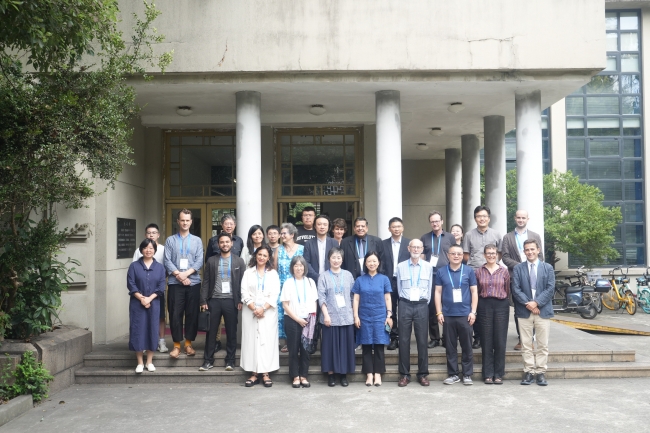| REVIEW | Summary of Thematic Session Two during the International Conference on Urban Heritage Conservation and Design for Sustainable Development |
| PublishDate:2023-10-24 Hits:1609 |
|
From 26 to 28 September 2023, the “International Conference on Urban Heritage Conservation and Design for Sustainable Development” and the first meeting on the establishment of the International Network for Urban Heritage Conservation in Higher Education Institutions were successfully held at the historic building of the former Lester Institute of Technical Education at Design Innovation Institute Shanghai and the Wenyuan Building at Tongji University campus. The conference was hosted by Tongji University and co-organized by the College of Architecture and Urban Planning (CAUP), World Heritage Institute of Training and Research for the Asia and Pacific Region (Shanghai), a Category 2 Centre under the auspices of UNESCO (WHITRAP Shanghai), and Shanghai Tongji Urban Planning and Design Institute Co., LTD (TJUPDI). The event was also presented as a forum during the 2023 World Design Cities Conference.
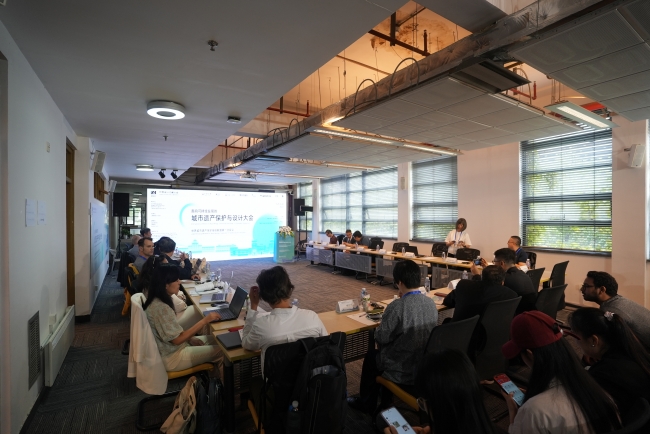 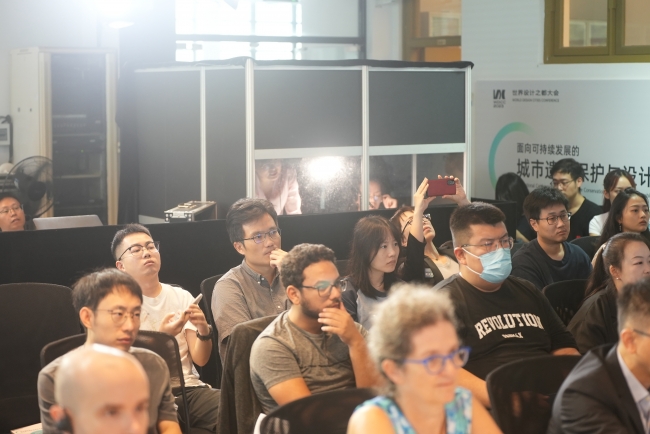 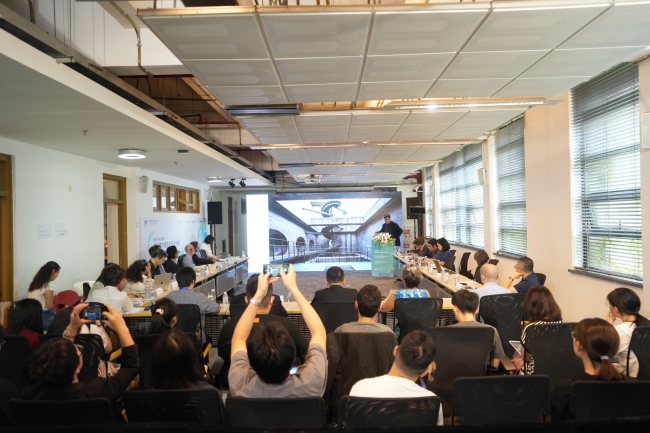 The conference comprises four sections: the opening ceremony, keynote speeches, three thematic sub-forums, and the closing ceremony. The Topic Two sub-forum on the morning of 27 September was moderated by Marie-Noël Tournoux, Project Director of WHITRAP Shanghai. Twelve speakers from China, Germany, Australia, Singapore, UK, Morocco, France and Saudi Arabia presented at the session on the topic of “Innovative Practice: Urban conservation for improving livability”.
The Continuity of Historical Context in the Creation of Urban Waterfront
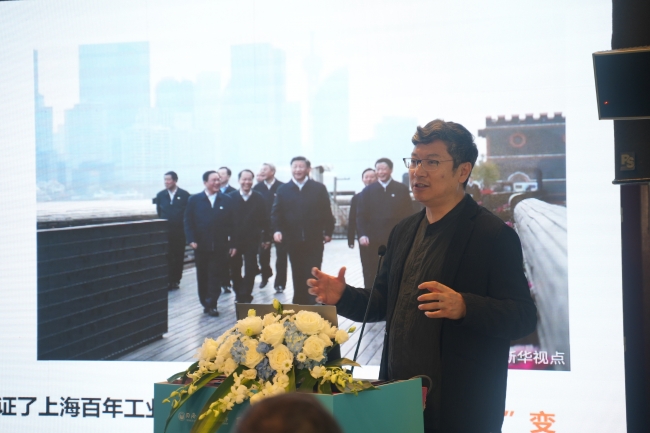 Zhang Ming
Professor and Head of Department of Landscape, CAUP, Tongji University
In his presentation titled “The Continuity of Historical Context in the Creation of Urban Waterfront”, Professor Zhang Ming illustrated how the heritage of the Yangpu Riverside area in Shanghai can be transformed and integrated into urban public spaces, promoting a sense of well-being by giving the riverside back to all the residents. He identified six dimensions for developing waterfront spaces in urban areas: creating urban public spaces, maintaining historical continuity, diversifying infrastructure, recovering ecosystems, building scene nodes, and incorporating public art. The speech focused on the second dimension about historical continuity which includes three essential principles: to preserve and follow the existing historical layerings of the site; to retain and present tangible elements with poetic aesthetics; and to map the present and future out of the tracks of past. Taking the waterfront Ares of Yangpu Riverside in Shanghai as an example, Professor Zhang Ming has condensed the following key words for a contribution to the revival of industrial sites: the transformation and regeneration of industrial heritage; conversion from a heavily polluted production line to an eco-shared living shoreline; the restoration of waterfront ecosystems; the creation of adaptive landscapes; a responsive system to history, behavior, and environment; and the establishment of a multi-functional, accessible, and shared waterfront area.
Using Heritage Impact Assessments as a Tool for Sustainable Development of Historic Urban Landscapes
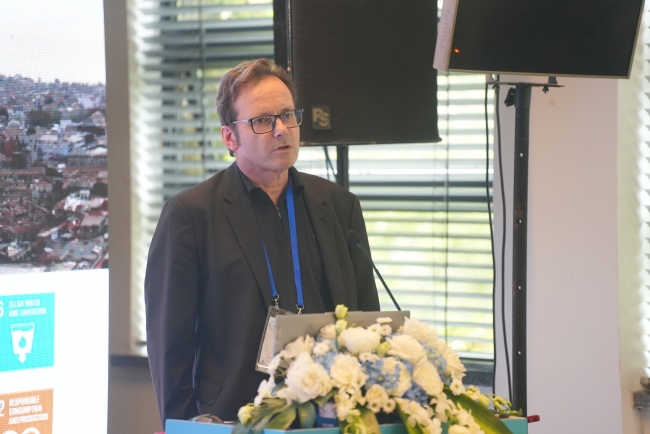 Michael Kloos
Professor of Preservation and Sustainable Development of Cultural and Historic Urban Landscapes at RheinMain University of Applied Sciences, Wiesbaden, Germany
In his presentation titled "Using Heritage Impact Assessments as a Tool for Sustainable Development of Historic Urban Landscapes", Professor Michael Kloos highlighted a conflict between conservation and development and argued that UNESCO's conservation concepts frequently remain as ineffective protection instruments due to their inability to be embedded into States Parties' legislative frameworks. Could Heritage Impact Assessments be a viable solution? He gave three case studies in response to this query. The delisting of the Dresden Elbe Valley, a World Cultural Heritage site in Germany, from the World Heritage List owing to construction activities, exemplifies the relevance of Heritage Impact Assessment in the planning and construction process. Impact Assessment can only serve its purpose if its direct feedback to the planning process and decision-making procedures is guaranteed. In 2017, a new Management Plan for the “Upper Middle Rhine Valley” World Heritage site was merged into the existing Master Plan through the Cultural Landscape Compatibility Study (CLCS). The CLCS practice has established a methodological framework for conducting heritage impact assessments through operationalization of the OUV, 3D Modeling and monitoring advisory council. The Heritage Impact Assessment (HIA) for the Master plan for the Development of Functional Region South Dalmatia (2016-2017) has integrated the HIA into the Strategic Environmental Assessment (SEA) process to enable the assessment of impact on World Heritage properties in early planning stages and to influence decision-making by providing a more evidence-based approach for later, more detailed planning phases. He argues that Impact Assessment is a process-related tool that can only be effective for the sustainable development of historic landscapes when it is closely aligned with urban planning and legislative processes. This integration is crucial for achieving sustainable development in these areas. Evolving and Changing Community Values. Whose Values Are We Addressing and Whose Heritage It Is?
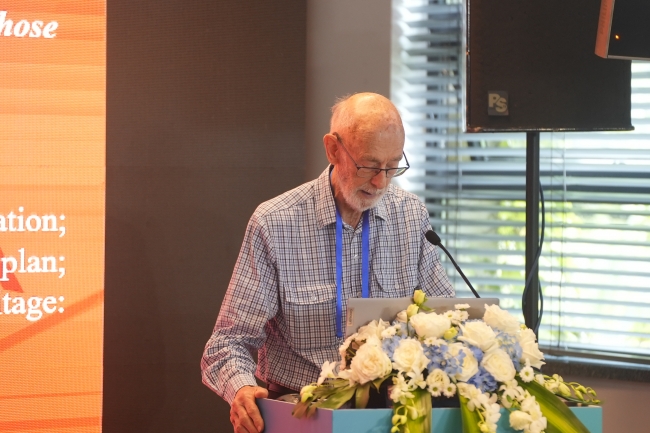 Ken Taylor
Honorary Professor, Centre for Heritage & Museum Studies, School of Archaeology and Anthropology, Australian National University
Emeritus Professor Landscape Architecture, University of Canberra, Australia
Professor Ken Taylor delivered a lecture entitled "Evolving and changing community values: Whose values are we addressing and whose heritage is it?" He outlined the criteria for assessing significance of heritage places, which includes: 1. Be apparent and understandable by other researchers, clients, community, & other stakeholders; 2. Applies methodological approaches that are replicable, ie can be applied elsewhere and modified where appropriate; and 3. Allows evaluation of proposed decisions or recommendations and is appropriate to the country and culture in which you are working. He continued to identify the five key questions that must be addressed during the research process: What has happened? When did things happen? Where did things happen? WHO was involved? And How and when WHY did they do what they did? Furthermore, Professor Taylor emphasized the necessity of incorporating the documentation of the evolving values within local communities as a crucial component of heritage conservation and preservation. He also mentioned the concept of nostalgia, which is evident in the decisions of residents to relocate or remain in a particular place due to their sentimental attachment to the place. Therefore, conserving urban heritage encompasses safeguarding the fabric of a place. Managing changes in a sustainable way is a pivotal aspect of ensuring that heritage endures amid transformation. To engage local residents in the process, it is necessary to organize additional stakeholder discussions, encourage cultural mapping and participatory mapping, and foster community engagement. Real and active sharing, together with inclusive methods of engagement, are fundamental for obtaining an authentic understanding of the site. Professor Taylor concluded his presentation with a thought-provoking question for his fellow architects to ponder: How and when do spaces come into places?
Survive with Water: Memory, Space and Life of Flood Diversion Area Settlements
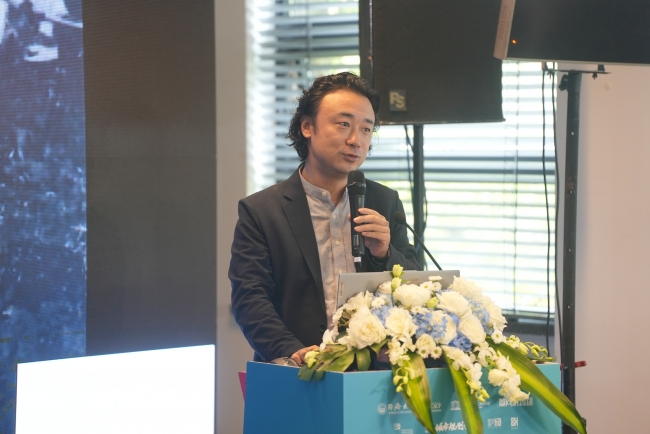 Jiang Hong
Vice Dean of School of Architecture at Southeast University (SEU-Arch)
Professor Jiang Hong delivered a speech on "Survive with Water: Memory,Space and Life of Flood Diversion Area Settlements". The presentation started by exploring the history of the floodplain and its communities, using the Jingjiang Floodplain in Gong’an County, Hubei Province as an example. Water management emerged as a top priority for the country in its early years after foundation, and the central government put in place extensive water control systems nationwide. Professor Jiang also looked into the specific attributes of the heritage. He stated that accurately identifying such items is essential for maintaining and passing forward the city's historical values. The safety zones, safety platforms, immigrant homes, water shelters, immigrant roads and bridges, and other physical remnants within the flood zones, along with the collective memories and emotions of the safety zones and other intangible elements, all represent significant sources of value in addition to the water conservancy project facilities. Professor Jiang then looked at the notable challenges that settlements in floodplains face. First off, following the completion of the Three Gorges Dam, the use of floodplain reduced substantially. Settlements began to spread beyond the embankment, creating a barrier to further expansion. The floodplain embankment causes traffic congestion, making traveling difficult. Moreover, high density and substandard housing are common features of living on the floodplain. His team examined these obstacles and took the following actions: 1) Extensive historical research and assessment of the floodplain's values were made. 2) A questionnaire-based survey of more than 2,000 residents was conducted. 3) Wide-range research and a thorough evaluation were carried out. 4) Ultimately, five action plans at four levels for the renewal were developed. Three planning and design strategies were implemented to enhance the city: First, a public system built on embankments with a multi-use ring belt is created. Second, barriers were torn down to increase traffic flow, and enlarge public areas. While also enhancing traffic services. Third, former factory properties were refurbished to facilitate interconnectivity and stimulate public activity within the open space. Professor Jiang concluded by making three points: first, it is important to have a comprehensive understanding of the significance of non-monumental heritage; second, heritage should not be viewed as a barrier to urban development, but rather as a solution; and third, heritage serves as a valuable resource for achieving a respectable, high-quality life and the SDGs.
Sustainable Development Ethics and Pedagogy
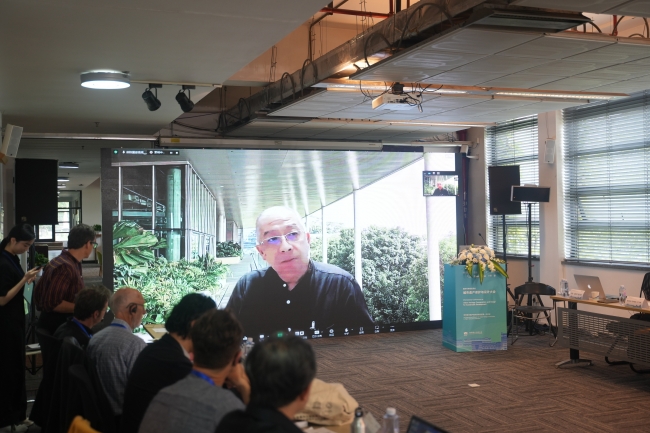 Johannes Widodo
Director of Graduate Programs in Architectural Conservation and Tun Tan Cheng Lock Centre for Asian Architectural and Urban Heritage (in Melaka) of the National University of Singapore
Johannes Widodo from the National University of Singapore presented on "Sustainable Development Ethics and Pedagogy". He explained how the climate crisis is connected to human ethics and behavior. The first step toward conservation is to shift from a top-down to a bottom-up strategy. Educating the next generation is a critical component of changing people's mindset and attitude. Universities should provide extensive learning opportunities and curricula that emphasize problem-solving and forward-thinking concepts in order to prioritize education's goal of changing attitudes and values. Additionally, the younger generation must foster teamwork and community participation through initiatives such as cultural mapping projects, which allow students to immerse themselves in their surroundings and set a positive example. Prof. Johannes discussed improving both the campus environment and economic prosperity through sustainable ecology. He gave several examples from the lab work, including the utilization of digital twins, carbon-neutral projects, and energy-efficient campuses. The younger generation can be educated about and inspired to support this movement by these examples. He recommends ways to improve energy efficiency and promote sustainable development. Start by establishing the notion that we are socially accountable individuals with empathy and integrity. Next, be authentic in accordance with local culture and traditions. Thirdly, strive for environmental sustainability with the goal of becoming carbon neutral, creating zero waste and emitting zero carbon. Fourthly, ensure cost-effectiveness for long-term economic viability. Lastly, in terms of architecture and technology, be adaptable. In conclusion, as Professor Johannes pointed out, achieving energy efficiency involves managing change by merging the modern and taking into account the human aspect while building with humility and regard for the environment. To encourage sustainable growth, the younger generation must adopt a steadfast commitment to their promises.
From Sustainability to Survivability
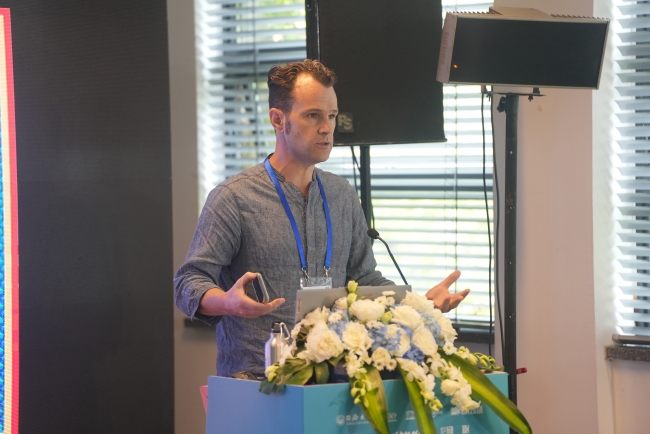 Edward Denison
Professor of Architecture and Global Modernities at the Bartlett School of Architecture, UCL
Professor Edward Denison delivered a lecture titled “From Sustainability to Survivability” where he concentrated on the question of the heritage in the Anthropocene, the new geological age created by human species. He emphasized that radical change of our mindset towards a planetary one is required to ensure the survivability before any cultural heritage can hold any value in the future. Professor Edward then presented a range of projects involving the architecture and environment of historic cities, with a focus on environmental, racial and spatial equity. He touched particularly on two aspects of the environmental and racial, with the equity issues in the Anthropocene. The exponential increase in production and population, energy use, carbon dioxide emissions and global surface temperature rise in the 20th century, have generated livability issues in anthroposinic environments. Cities are continuously undergoing change, with old buildings being demolished and new ones being created. Old landmarks are being replaced by new ones. This shift is reshaping the entire globe. Professor Edward highlighted the topic of colonization and equality, which pertains to the European notion of modernism and modernity. It is worth noting that Europe possessed five times more World Cultural Heritage sites in Africa. Finally, he referred to The Cape Town Document on Modern Heritage, which is the primary outputs of the Modern Heritage of Africa initiative in the spirit of the Nara document on authenticity. The document aims to reframe, dissent and decolonize the Eurocentric perspective on modernity that UNESCO and its advisory bodies have traditionally held. Instead, it proposes a more equitable and globally representative concept of modernity in a planetary age.
International Consensus on Heritage Conservation and the Practice in Guangzhou
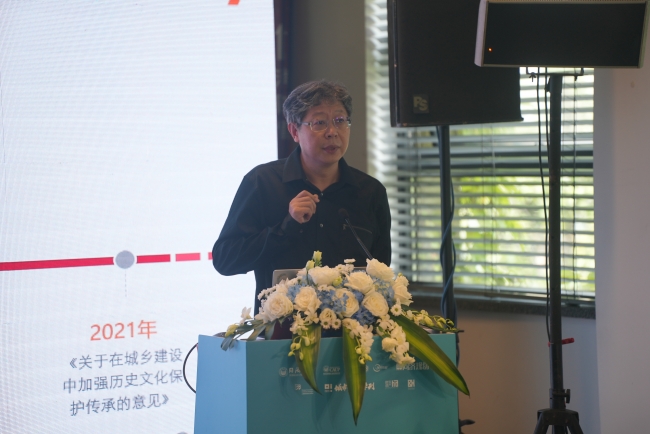 Wang Shifu
Professor of Urban Planning and the Vice Dean of the School of Architecture at South China University of Technology
Professor Wang Shifu presented on the topic of "International Consensus on Heritage Conservation and the Practice in Guangzhou". He first outlined how an international agreement developed, moving from a singular focus on individual monuments to a more holistic perspective, from artistic values to the fulling of daily demands, and from preservation to adaptive reuse. He further explained the practices employed in Guangzhou, emphasizing the range of processes involved, from preserving physical features to a comprehensive landscape approach, as well as from technical interventions to institutional innovations. Guangzhou, being a megacity, confronts various challenges when it comes to conserving its historical architecture, such as a large population, intense growth pressure, a lack of building maintenance, and complex property rights. He continued by presenting significant explorations conducted in Guangzhou, covering a variety of aspects. First, the safeguarding of heritage has consistently progressed with the development of knowledge regarding their values. In 1961, the first set of five national key cultural relics’ protection units and the initial batch of national historical and cultural cities were identified. Subsequently, in 1982, the protection of the historical urban layout, style and historical neighborhoods was advocated. In 1998, Guangzhou delineated the first batch of 37 historical and cultural conservation zones, followed by the announcement of the first municipal intangible cultural heritage listings in 2005. In 2014, the boundaries of the historical urban area were defined. Guangzhou has created a five-tiered framework to protect tangible cultural assets. Natural settings, historical urban areas, prominent towns and villages, historical neighborhoods, cultural artifacts and heritage structures, and traditional architecture are among the categories. Second, Guangzhou has improved its legislation and processes for adaptable and responsive urban heritage management. It has put in place a process to research and evaluate cultural and historical heritage, as well as protecting regulations for objects of potential significance for preservation. A system of legal professionals dedicated to cultural heritage conservation has been established to handle cases of public interest. In terms of technology, digital-based technologies have also been implemented for heritage management, facilitating virtual-real interaction and aiding in the preservation of cultural heritage. The effective implementation of organic renewal and heritage operation through micro-renovation in Yongqing Square on En’ning Road, along with the encouragement of multiparty participation and autonomous renewal action for heritage conservation, has contributed to the development of a public consensus on heritage conservation. Guangzhou has been commended internationally for its innovative approaches to cultural conservation and education, which have made exceptional contributions. Professor Wang came to the conclusion that maintaining urban heritage requires a harmonious fusion of global consensus and local implementation, as well as a balance between historical memory and modern living. Historical preservation is the starting point, cultural heritage is the main objective, and revitalization and innovation are the essential components.
Historic Urban Landscape of Rabat Area Morocco
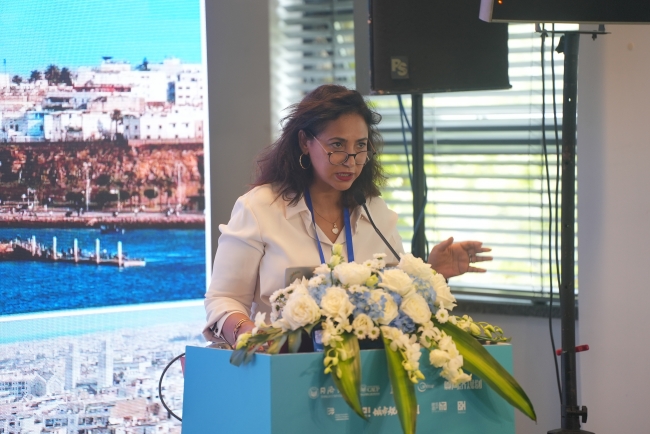 Imane Bennani
Dean of the School of Architecture at the International University of Rabat(Morocco), Chairholder of the UNESCO Chair "Historic Urban Landscape, between training and research"
Imane Bennani from the School of Architecture at the International University of Rabat (Morocco) presented on the topic of “Historic Urban Landscape of Rabat Area Morocco". The presentation began with a description of the area's extensive and diverse architectural and cultural heritage, showcasing its capacity to unite the past and present. She also popularized the neo-traditional design aesthetic, which was inspired by historic structures and reinterpreted applying modern architectural techniques. The goal of this design is to blend the beauty of the past with modern building materials. The management plan and action plan for the Moroccan region of Rabat were then presented. The management strategy also lays out a basis meant to encourage collaboration among various stakeholders. A unique safeguarding scheme has also been created to protect the cultural heritage. The program, which is carried out by a third party and certifies the authenticity of the town's fabric while advancing universal principles, promotes both endeavors. The Rabat region possesses a commendable governance system, run by a specialized company that facilitates the revitalization of the heritage, highlighting its potential for financial success. Finally, she outlined the fundamental elements for managing heritage site of Rabat. These include the requirement for government commitment, full coordination between the city and the Ministry of Culture, legislative safeguards for plans, and impact analyses of heritage-based approaches.
From Slums to World Heritage - Two Case Studies of Urban Conservation and Renewal in Belgium
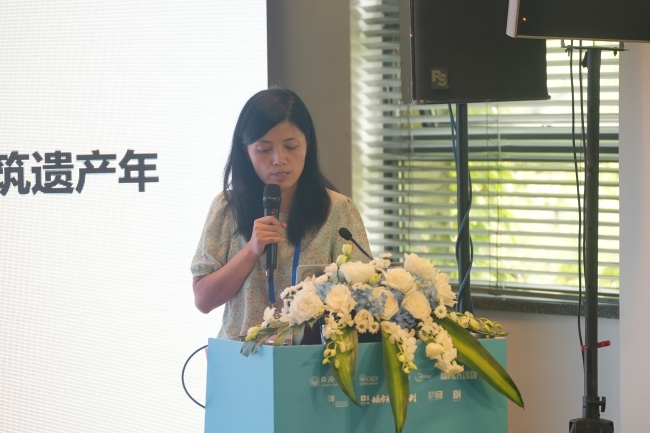 Wu Meiping
Distinguished Associate professor of the School of Architecture, Tianjin University
Professor Wu Meiping, from the School of Architecture at Tianjin University, delivered a speech titled “From Slums to World Heritage - Two Case Studies of Urban Conservation and Renewal in Belgium”. She started off by giving a brief review of Belgian heritage conservation. She emphasized Belgium's favorable location, which enables it to swiftly acquire cutting-edge ideas and methods from other European countries. Additionally, she talked about the broader context, encompassing the Venice Charter and the founding of ICOMOS, as well as the two European Architectural Heritage Years. She proceeded to present two examples of urban conservation and regeneration. The first relates to the conservation and regeneration of a specific cluster of buildings located in the heart of Leuven's old city, known as the Great Beguinage of Leuven. This case study demonstrates the limitations of the Venice Charter in addressing the conservation of such building groups. The subsequent example examines the strategies and concepts for an integrated conservation and focuses on the preservation and revitalization of Brugges' historic city center. The long-term goal is to improve living standards, attract former residents to return, and enhance the tourist experience, all of which will help the city continue to grow sustainably in the future. Finally, it can be concluded that these two cases relate to urban conservation and regeneration in the context of Belgium's post-World War II reconstruction and high-speed development marked by a transition from incremental to inventory growth. Both cases have been inscribed as World Heritage Sites, demonstrating that high-quality preservation and regeneration carried out with a long-term strategic vision not only achieves the conservation and inheritance of the heritage but also enhances its intrinsic value and the quality of living for local residents.
Back to the Sources: Understanding the Past to Build the Future
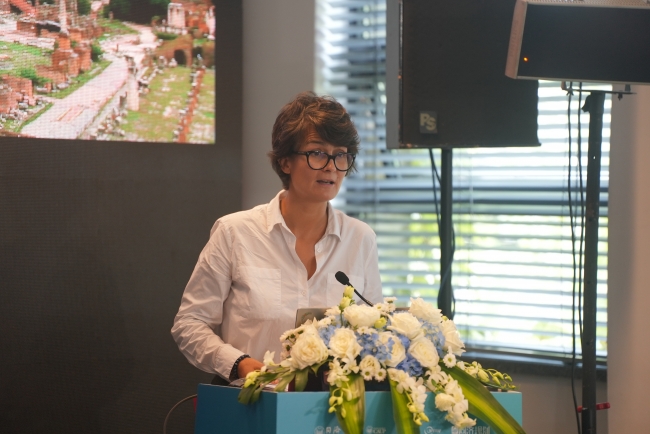 Elsa Marguin Hamon
Director of Research and International Relations of the Ecole Nationale des Chartes, France
Elsa Marguin Hamon, the Director of Research and International Relations of the Ecole Nationale des Chartes, presented on "Back to the Sources: Understanding the Past to Build the Future". She began by introducing the methods of urban survey for understanding the beginnings of cities. The goals of documentary heritage were subsequently outlined, emphasizing its unique status as a type of heritage. Managing and preserving historical documents can be of great educational value as they provide insight into the past and offer inspiration for modern architecture. The overarching goal is to spread and enrich knowledge through the contributions of various approaches and disciplines; identify and digitize pertinent documentation; develop information systems for enriching and structuring digitized data; enable the correlation and alignment of data through semantic tools, such as ontologies and thesaurus; and share and open up knowledge in order to use it as the foundation for study, teaching, and promotion programs.
The Process of Definition: Urban Life and Landscape Heritage
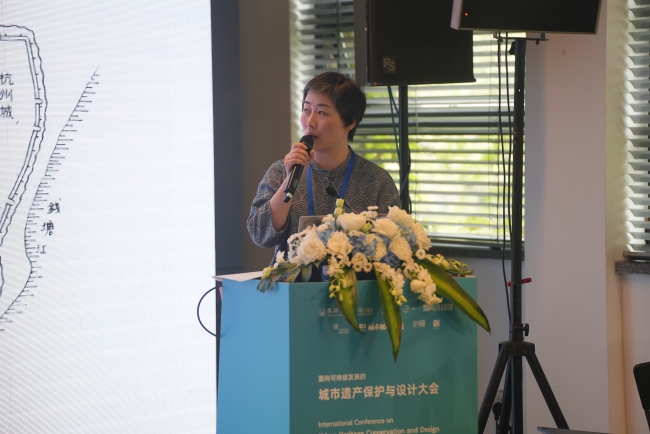 Fu Shulan
Associate Professor of the Department of Urban Planning at Zhejiang University
Vice Director of International Center for History, Critics of Architecture and Restoration of Historical Heritage
Professor Fu Shulan from the Department of Urban Planning at Zhejiang University delivered a presentation entitled "The Process of Definition:Urban Life and Landscape Heritage." She then provided detailed insights into the process of heritagization of West Lake. She analyzed Hangzhou's process of urbanization, which involved the development of the urban landscape through structural changes and expanding spaces. Following this, she provided a more detailed explanation of how the definition of landscape has evolved from its original meaning to its current definition, being careful to highlight any potential misunderstandings. Based on this, Professor Fu assesses variations in pictorial expressions, differences in the types of viewing objects of West Lake panorama inscriptions, and differences in textual interpretations of the Ten Scenes of West Lake during the Southern Song Dynasty in different time periods. The viewing space has undergone several changes, including a shift away from specific viewing locations or architectural features, a transition towards a human activity-centered cityscape as opposed to a natural landscape-based one, and a change in how people perceive the surrounding landscape from natural to urban settings. Furthermore, there has been a change in the group of people moving through the surroundings. Spatial limitations and behavioral constraints may hinder the natural development of cultural phenomena. Professor Fu posed the question of whether such limitations not only impact spatial construction in the context of heritage studies but also have implications for human activity, potentially posing challenges to its fairness and legitimacy.
Removing the Dust: Documentation and Analysis of Traditional Built Environment of Saudi Arabia
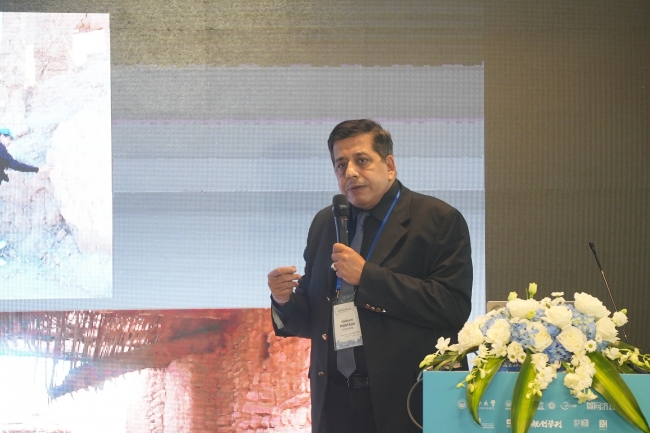 Hisham Mortada
Professor of School of Architecture, King Abdulaziz University (Saudi Arabia)
Professor Hisham Mortada from King Abdulaziz University delivered a speech entitled "Removing the Dust: Documentation and Analysis of Traditional Built Environment of Saudi Arabia". The presentation provided a summary of the work done to document Saudi Arabia's traditional architecture, including space allocation, exterior treatment, construction methods and materials, and other influencing elements. For instance, 3D laser scanning was used to restore the historic structures. Urban analysis using conventional methods, such as painting, photographic survey, thermal analysis, and investigation of the city's past, was the first step in the process. The report's conclusion included a presentation of the results.
Wrap up
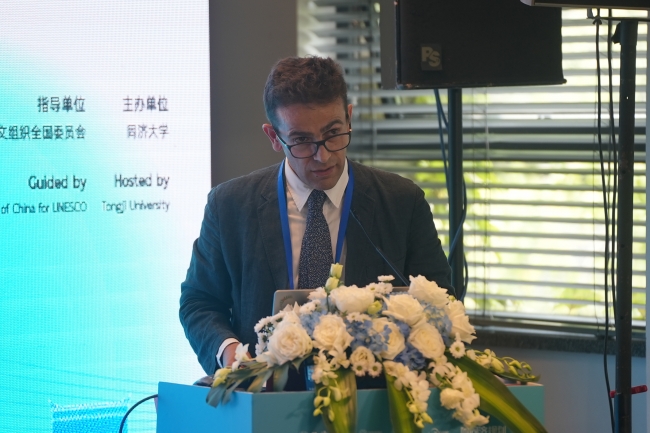 Finally, Professor Plácido González from the College of Architecture and Urban Planning of Tongji University and a Research Fellow at the University of Seville, Spain contributed a concise summary and commented on the speeches to round out the session.
Contributed by: Conference Working Group Edited by: Jiang Yunyang(Intern) |
- News | WHITRAP Shanghai and CNR-ISPC bilateral meeting
- News | WHITRAP meets Cité de l’Architecture et du Patrimoine
- WHITRAP Hosting "Workshop on Preliminary Assessment for National Focal Points of the Asia Region" in Chengdu
- WHITRAP Shanghai meets UNESCO
- INTERNATIONAL CONFERENCE PRELIMINARY ANNOUNCEMENT & CALL FOR PAPERS
- Observation of the 46th Session of the World Heritage Committee
Copyright © 2009-2012 World Heritage Institute of Training and Research-Asia and Pacific (shanghai)


